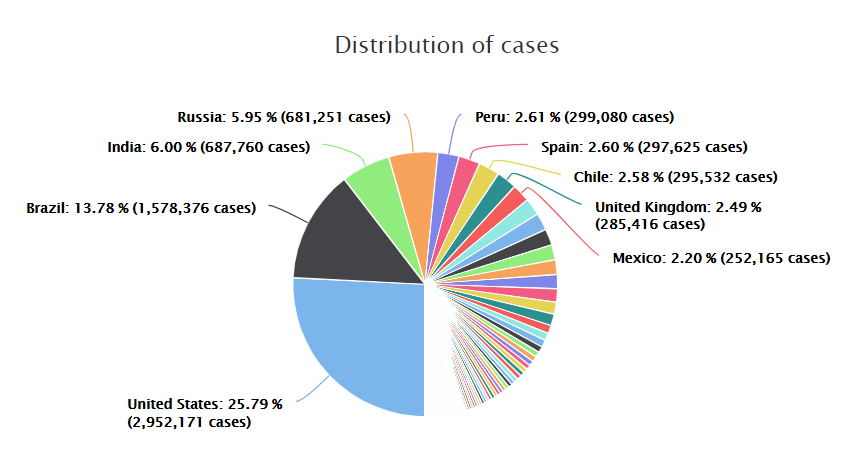Pandemics have caused tremendous loss of life in all of human history. Just 100 years ago, about one-third of the world ‘s population was affected by an epidemic-the 1918 Spanish flu pandemic. Around 500 million people were affected when between 1918 and 1919 more than 50 million died. Researchers in those days weren’t aware that viruses could cause disease. The world had no vaccines and no antivirals to prevent the spread of influenza. Later on, the world struggled with epidemics such as the SARS outbreak from 2002 to 2004, the swine flu in 2009, MERS in 2012 and Ebola in 2014.
Nowadays, we are going through a difficult period because of COVID-19. Coronavirus disease (COVID-19) is an infectious disease caused by a newly discovered coronavirus. As of 4 July 2020, the COVID-19 outbreak had caused over 11,120,770 cases worldwide since the first case was reported in China in January 2020. Of these, more than 529,492 are known to have died.
Since the beginning of this viral pandemic, Artificial Intelligence (AI) is being used as a tool to support the fight. Many people believe that data science and AI can be used to confront the coronavirus and complete the missing pieces still left by science. Lets look at some main applications of AI in COVID-19 pandemic.
1) Early Detection and Diagnosis
AI implementation in healthcare systems offers advantages in early detection by being able to pinpoint any risk alerts a patient may have. For example, AI can quickly analyze ‘red flag’ symptoms that can be detected from X-Rays, MRI’s and CT Scans. Moreover, it helps to provide faster decision making by assisting to the doctors, which is also cost-effective. Last but not least, it can detect unknown patterns which can be a new diagnosis for diseases.

2) Monitoring the Treatment
AI with Machine Learning (ML) can be used for building an intelligent platform which can be used for automatic monitoring and predicting the spread of the virus. Automatic monitoring is important because it can provide day-to-day updates of the patients so that not only the world health researchers and the doctors, but also whole people can remain updated all the time about the global disease. Worldometer’s COVID-19 website is a perfect example of automatic monitoring.

In predicting the spread of the virus, ML algorithms are come in handy. ML can be used for:
- Identifying who is most at risk
- Developing new drugs and vaccines
- Projecting and predicting the spread of the disease
- Extracting the features of the disease that can be used in diagnosis
AI is an emerging and valuable tool for detecting early disease infections and also helps to monitor the condition of the infecteds. Through designing useful algorithms, it can greatly increase the quality and the efficiency of diagnosis and decision making. It is true that AI hasn’t reached to a level where it can cure diseases by itself. Yet, it is undeniable that AI is helpful to us a lot.
